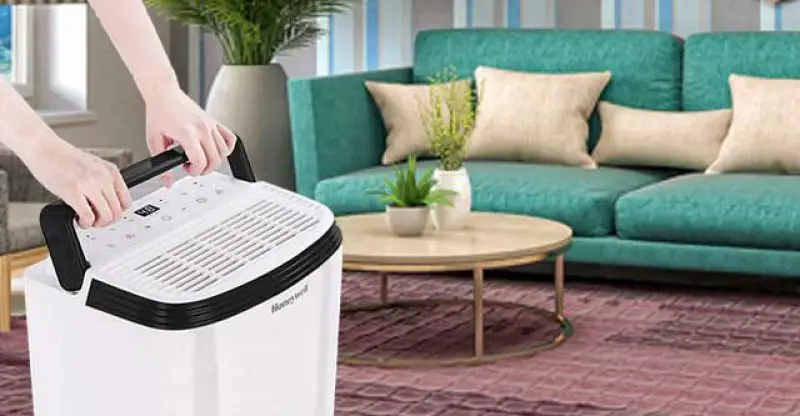What Size Dehumidifier Do You Need for Home?
Are you feeling lost and confused about which dehumidifier to buy for your home? It’s no wonder with so many different designs, brands, and sizes on the market, it can be a real challenge to find the right one. But fear not, as we are here to help you navigate through the overwhelming options.
A dehumidifier is a must-have item in your household if you want to get rid of the extra moisture that can cause damage to your belongings and even negatively impact your health.
But before you jump the gun and make a hasty purchase, you need to ask yourself a crucial question: What size dehumidifier do I need for my home?
To ensure that you’re buying the right size, you need to do your research and gain an understanding of the various types available. But don’t worry, we’ve got you covered.
In this blog post, we will provide you with some essential information on dehumidifier sizes that will help you make an informed decision when it comes to purchasing one.
By the end of this post, you’ll have a clear understanding of what size dehumidifier you need to keep your home comfortable and healthy. So let’s get started!
What is the Size of a Dehumidifier?
When it comes to dehumidifiers, size doesn’t refer to physical dimensions, but rather to its capacity – the amount of water it can extract from the air each day.
This is measured in liters or pints per day (PPD). Capacity is a crucial factor to consider when selecting a dehumidifier for your home.
Dehumidifier sizing is all about capacity, and it’s essential to understand how much humidity a unit can remove from the air in 24 hours.
The most commonly available models have capacities of 30, 50, or 70 pints. However, there are smaller models with a 20-pint capacity and larger units that can extract more than 100 pints per day.
The capacity of a dehumidifier also determines the size of the room it can cover. If you know the square footage of your space, you can easily choose a suitable unit. Keep in mind that high-capacity models may be physically larger, but this is not always the case.
So, before you make a purchase, consider the capacity of the dehumidifier and the size of the room you want to use it in. This will ensure that you select the right unit to maintain a comfortable and healthy indoor environment.
How to Choose a Dehumidifier?
When selecting a dehumidifier, it is essential to consider several factors, such as the size of the area where you will use it and whether you will place it in a damp room. Here are some crucial points to keep in mind when choosing a dehumidifier:
Size does not refer to the physical dimensions of the dehumidifier, but rather its capacity to extract moisture from the air in one day, measured in pints.
High-capacity dehumidifiers can remove more moisture and are generally larger, requiring more space, while smaller ones have a lower extraction capacity.
However, when we talk about size, we mean how much work it can do. Various factors determine the appropriate size for your room:
Room Size vs Room Conditions
The size of the room Excessive energy costs result from dehumidifiers with capacities greater than the size of the room Likewise, dehumidifiers are ineffective when inserted in rooms bigger than their capacity.
Measure the area in which you want to use the dehumidifier. Have used a measuring tape to determine the size of your space in sq ft. Multiply the length and width of a room.
A space that is 50 feet long and 30 feet wide, for example, has a total area of 1500 square feet (50 x 30 = 1500). The quantity of humidity in the space and the overall working surroundings of the dehumidifier can both influence the effectiveness of the setup.
At large humidity levels, for example, leakage mostly on walls may be visible. Based on these levels, you can choose a 70-pint dehumidifier.
Dehumidifier Pints vs Room Size
This pertains to the optimum quantity of humidity that a dehumidifier can retain. The greater the space size the greater the number of dampness obtained.
This describes why bigger pint dehumidifiers are required in big spaces. The most popular pint sizes are 30, 40, and 70. We will check out in details below:
- 30-Pint Dehumidifier: This is the preferred size for places of approximately 1500 sq ft, irrespective of how moist the space is. Which implies it will be suitable for the majority of housing basements.
- 40 or 50 Pint Dehumidifier: This is the preferred size for places up to 2000 sq ft that is continuously humid and stench musty, have visible humidity mostly on walls, or have previously handled with mold spores.
- 60 or 70 Pint Dehumidifier: This site is suggested for places greater than 2000 sq ft.
Recommendation Chart for Dehumidifier
The chart below is going to be needed for sizing a dehumidifier. The statistics are based on all those given by the Association of Home Appliance Manufacturers in the United States.
Please remember that these figures are only guidelines. As discussed earlier, certain factors such as the type and temperature of the atmosphere reduce the productivity of a dehumidifier.
The top row indicates the size of the space or surroundings to be dehumidified. The first column indicates how much dampness is present in the room.
Conclusion
A dehumidifier is an excellent machine for removing moisture from the air around you while protecting your garments and electronic devices from moisture damage. It contributes to the creation of a healthy atmosphere for people who suffer from exhaling allergic reactions and problems.
However, having the right size dehumidifier is critical if you want to get the most out of it. Take the previously mentioned factors into account when evaluating the size of the dehumidifier that will be ideal for your living area.
FAQs
Larger dehumidifiers have higher extraction capacities and can cover more significant areas, making them more effective in removing moisture from the air in larger spaces.
Yes, it is possible to use a 70-pint dehumidifier when only 30 pints are required. It will not harm you or space, but it could be annoyingly noisy in tiny rooms. I
It depends on the size of the house and the level of humidity. A single dehumidifier may be enough for a small house, while larger homes may require multiple units or a whole-house dehumidification system.
Dehumidifiers use varying amounts of electricity, depending on their size, capacity, and usage. Generally, smaller units are more energy-efficient than larger ones.



